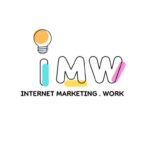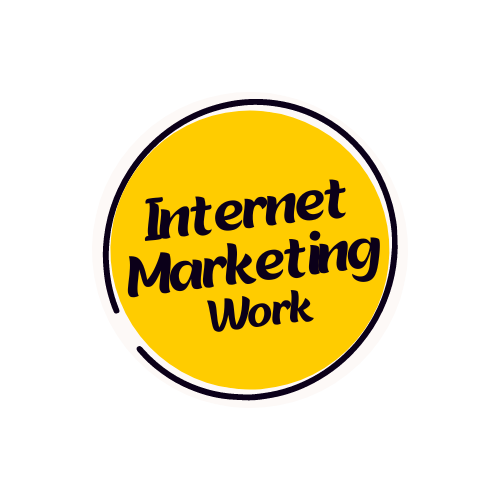Checklist: 21 Things Your Website Needs to Convert Visitors
✅ Checklist: 21 Things Your Website Needs to Convert Visitors
In today’s digital-first world, your website is often the first impression people have of your business. But having a website isn’t enough. If it doesn’t convert visitors into leads, customers, or subscribers—it’s just a digital brochure. Whether you’re a small business owner, blogger, or digital marketer, optimizing your website for conversions is essential.
Here’s a checklist of 21 must-have elements that your website needs to convert visitors effectively.
1. Clear Value Proposition
Your value proposition should immediately answer: What do you do? Who is it for? Why should someone choose you?
Place this in a prominent spot—like your homepage header or hero section—so visitors quickly understand your offering.
2. Fast Loading Speed
If your website takes more than 3 seconds to load, you’re already losing visitors. Page speed affects both user experience and SEO.
✅ Use tools like Google PageSpeed Insights or GTmetrix to optimize performance.
3. Mobile Responsiveness
Over 60% of website traffic now comes from mobile devices. Your website must be fully responsive, meaning it should adapt to all screen sizes.
✅ Use a mobile-first design approach and test on various devices.
4. Strong Call-to-Action (CTA)
Every page on your website should guide the visitor toward an action—buy now, book a call, download a guide, sign up for emails, etc.
✅ Make your CTAs visually distinct and action-oriented (e.g., “Get Started,” “Book My Free Demo”).
5. Easy Navigation
Confusing menus or hard-to-find links frustrate users. A clean, well-organized navigation menu helps users find what they’re looking for.
✅ Keep it simple: Home, About, Services/Products, Blog, Contact.
6. Social Proof
People trust people. Adding testimonials, reviews, client logos, and case studies builds trust and credibility.
✅ Include real names, photos, and outcomes if possible.
7. Clear Contact Information
Visitors should be able to contact you easily. Include a contact form, email, phone number, and even a physical address if relevant.
✅ Consider adding a live chat for instant support.
8. Search Engine Optimization (SEO)
You won’t convert visitors if you don’t have any. SEO ensures your site is visible in search engines.
✅ Use keywords in headings, optimize meta tags, add alt text to images, and build backlinks.
9. Secure Website (HTTPS)
People won’t trust a site that shows a “Not Secure” warning. Plus, Google prioritizes HTTPS in search rankings.
✅ Get an SSL certificate—it’s affordable and easy to install.
10. Trust Badges or Certifications
These can include payment security icons, awards, affiliations, or guarantees. They reassure visitors that they’re making a safe decision.
✅ Use badges near CTAs or checkout areas.
11. Engaging Visual Design
Your design should be modern, clean, and visually appealing. Avoid clutter, harsh colors, or too many fonts.
✅ Use whitespace strategically and follow brand consistency.
12. Lead Capture Forms
You need a way to collect emails or leads. Use forms to offer something valuable in return—like an ebook, discount, or checklist.
✅ Keep forms short: name + email is often enough.
13. Clear Headlines and Subheadings
Visitors scan content. Headlines and subheadings should tell a story and guide users through the page.
✅ Use H1 for main titles, H2s for sections, and H3s for subpoints.
14. High-Quality Images and Videos
Visual content grabs attention and can explain complex things quickly. Stock photos are fine but real photos are better.
✅ Include explainer videos, product demos, or behind-the-scenes clips where possible.
15. A Blog or Knowledge Section
This not only helps with SEO but also positions you as an authority. It builds trust and keeps people on your site longer.
✅ Publish content that answers your audience’s questions and solves their problems.
16. Analytics Integration
You can’t improve what you don’t track. Use Google Analytics or other tools to monitor bounce rate, conversions, and user behavior.
✅ Set up conversion goals in Google Analytics or GA4.
17. Testimonials and Case Studies
These prove that your product or service works. Use storytelling to showcase how real people benefited from what you offer.
✅ Use a dedicated page or sprinkle them throughout your site.
18. FAQ Section
Anticipate objections or concerns by answering common questions. This helps reduce bounce rates and encourages conversions.
✅ Update FAQs regularly based on customer feedback.
19. Internal Linking
Guide visitors to explore more by linking relevant content or product pages. It boosts time-on-site and reduces bounce rate.
✅ Use anchor text naturally—don’t just write “click here.”
20. Exit-Intent Popups
If a user is about to leave, offer something to keep them: a discount, a lead magnet, or a chat option.
✅ Use sparingly—don’t be annoying. Test and track performance.
21. Fast, Simple Checkout Process (for E-commerce)
Too many steps, forced account creation, or slow checkout will kill your conversions.
✅ Offer guest checkout, minimal form fields, multiple payment options, and trust signals.
Final Thoughts: Conversion is About the User
Your website isn’t just about how it looks. It’s about how it works—for your visitor. If people can’t understand, trust, and take action on your site, it won’t generate results. This checklist gives you the foundation for a conversion-ready website.
But remember—conversion optimization is ongoing. What works today might not work tomorrow. So test, tweak, and improve continuously.
Quick Recap: The 21-Point Checklist
-
✅ Clear Value Proposition
-
⚡ Fast Loading Speed
-
📱 Mobile Responsiveness
-
🎯 Strong CTA
-
🧭 Easy Navigation
-
👥 Social Proof
-
📞 Clear Contact Info
-
🔍 SEO Optimization
-
🔐 Secure Website (HTTPS)
-
🛡️ Trust Badges/Certifications
-
🎨 Engaging Visual Design
-
📥 Lead Capture Forms
-
📝 Clear Headlines/Subheadings
-
📸 High-Quality Media
-
📚 Blog/Knowledge Base
-
📊 Analytics Tracking
-
🌟 Testimonials & Case Studies
-
❓ FAQ Section
-
🔗 Internal Linking
-
🧲 Exit-Intent Popups
-
🛒 Simple Checkout Process
Bonus Tip:
🔁 A/B Test Everything!
Try different CTAs, headlines, colors, or layouts. What works for one audience may not work for another.
Whether you’re launching a new site or revamping an existing one, run through this checklist to ensure your site is built to convert. When you align user experience with business goals, your website becomes your most powerful marketing tool.


